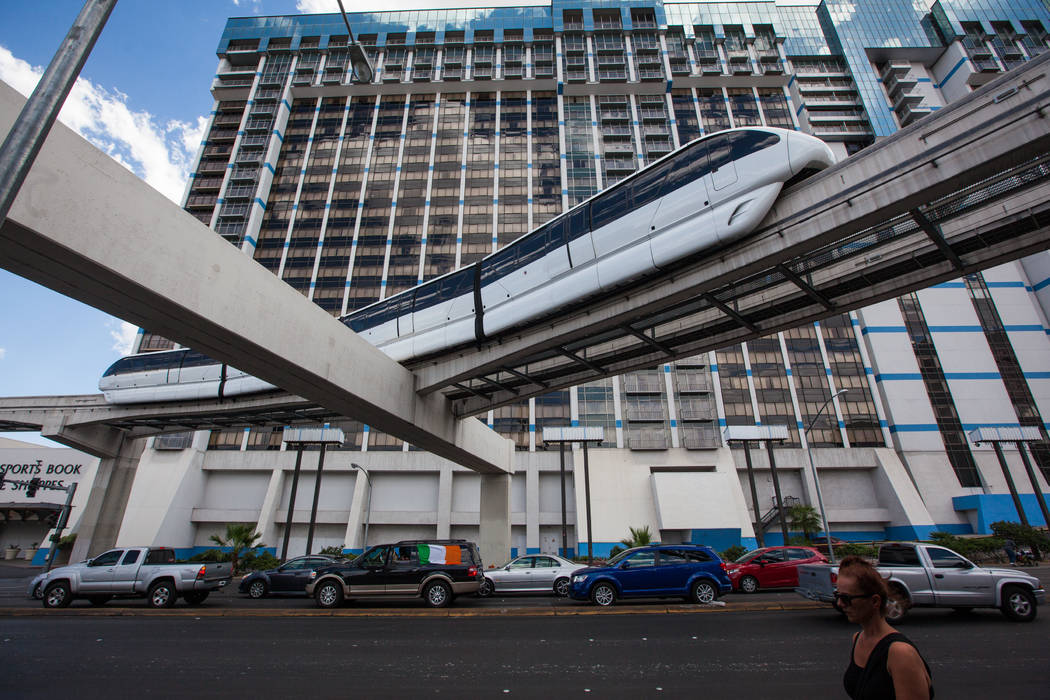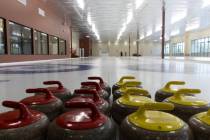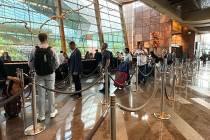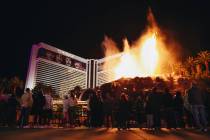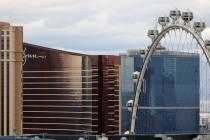Time to get serious about mass transit for Las Vegas Raiders Stadium
More than a decade ago, Curtis Myles, president and CEO of the Las Vegas Monorail Co., hopped on Societe de Transport de Montreal’s green line, got off at the Pie-IX station and walked to Olympic Stadium for a Montreal Expos baseball game.
He did what millions of people around the country do daily — use mass transit to get to a ballgame.
“The thing you notice right away is that it takes a pretty important concern for participating in those activities away,” Myles told me in a phone interview last week.
“Driving to a site, parking, what it’s going to cost, how long it’s going to take you to get in and out. That concern goes away,” he said. “Then, you can focus on the event itself.”
That’s what Las Vegas needs to get on board with to solve what the Oakland Raiders say is one of its three most vexing problems attached to the development of the 65,000-seat stadium, Southern Nevada’s newest tourism amenity, due to open in 2020 — parking.
While many have maligned the Las Vegas Monorail in the 13 years it has operated, it’s clearly one of the solutions to the parking issue.
Clark County requires the stadium to have 16,250 parking spaces available for the facility. The 62.5-acre site the Raiders purchased as a stadium site has room for just 2,375 spaces, leaving a shortfall of around 13,900.
The Raiders have floated the possibility of negotiating for the use of existing parking spaces at UNLV, nearby resorts and prospective new lots in existing open space, perhaps paving over Bali Hai Golf Club.
But what if the Raiders instead negotiate with properties along the monorail route where there are thousands of spaces that already exist?
Myles has considered it.
He’s walked the sidewalk from a planned Mandalay Bay Convention Center station site to where the stadium front door will be.
It takes eight minutes.
On average nationwide, the walk from a mass transit station to a stadium site takes 20 minutes.
Myles has thought about other logistics, noting that the highest demand would occur right after a game when the mass stadium exodus occurs.
Myles said normally trains could carry 3,000 people per hour per direction but at the end of games that could be bumped up with extra trains available to expedite departures. The Mandalay station, in fact, is being designed to house one or two extra trains for that purpose.
Trips into the stadium site are easier to accommodate because fans normally space out their arrivals over a three-hour period prior to game time.
There’s plentiful parking along the monorail route and it’s not hard to envision multiple tailgating sites in those lots. It could be a revenue opportunity for lot owners and spur competition for the best tailgating parties. Imagine: Whose tailgate party is better, Westgate’s, The Linq’s or MGM’s?
Myles said he’s just had brief conversations with the Raiders but the time is right to get serious.
It’ll take two years to build the extension and run all the necessary operational tests, which means construction needs to begin by about a year from now.
Now is the time to put more mass transit into the stadium mix.
Contact Richard N. Velotta at rvelotta@reviewjournal.com or 702-477-3893. Follow @RickVelotta on Twitter.



